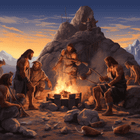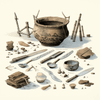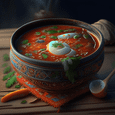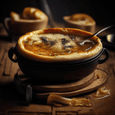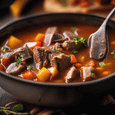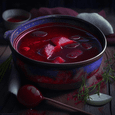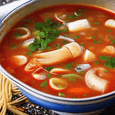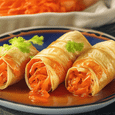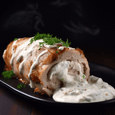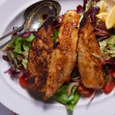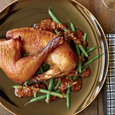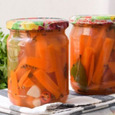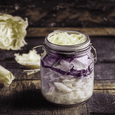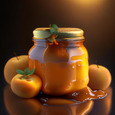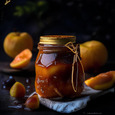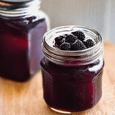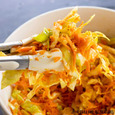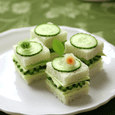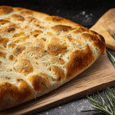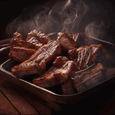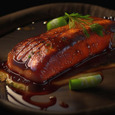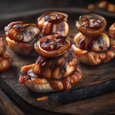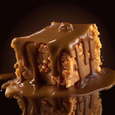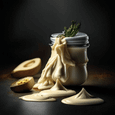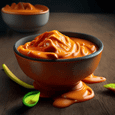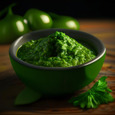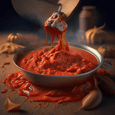Prehistoric Cooking Methods: A Journey into Ancient Culinary Traditions
In the early days of human civilization, our ancestors not only had to adapt to their surroundings but also had to find ways to satisfy their hunger. Prehistoric cooking methods emerged as a necessity for survival, paving the way for the development of culinary traditions that have thrived throughout history.
Throughout this article, we will delve into the intriguing world of prehistoric cooking methods and explore how our ancestors prepared their meals. From using fire to mastering the art of preserving food, their culinary practices laid the foundation for the gastronomic delights we savor today.
Fire: The Ultimate Game-Changer
The discovery of fire revolutionized the way prehistoric humans cooked their food. By harnessing the power of flames, our ancestors were able to transform raw ingredients into delectable meals.
Roasting and Grilling
Roasting and grilling were two common methods of cooking meat over an open fire. Imagine a group of cavemen huddled around a blazing fire, skewering pieces of meat and patiently waiting for them to cook. The crackling sound and mouth-watering aroma would have made this primitive cooking method an unforgettable experience.
Boiling
Another cooking technique employed by prehistoric humans was boiling. Invented by filling containers with water and simmering food over a fire, boiling allowed our ancestors to cook a wide variety of ingredients. This method was particularly useful for preparing soups and stews using herbs, roots, and meat.
Preserving Food: From Drying to Fermenting
Prehistoric humans were also adept at preserving food, ensuring a steady supply during lean times. Let's explore some of the ancient preservation methods they employed:
Drying
In the absence of modern refrigeration, drying food was an essential technique for early humans. By removing moisture from fruits, vegetables, and meat, they could extend the shelf life and prevent spoilage. Sun drying and air drying were commonly used methods, with food being laid out in the open until it became sufficiently dehydrated.
Smoking
Smoking food was yet another prehistoric preservation method. By exposing meat and fish to smoke, the growth of bacteria and fungi was hindered, preventing decay. Additionally, smoking imparted a distinct flavor to the food, enhancing its taste and providing a satisfying culinary experience.
Fermenting
Fermentation played a crucial role in prehistoric food preservation. Early humans discovered that certain foods, when left to ferment, developed unique flavors and increased nutritional value. Fermented foods like yogurt and sauerkraut were highly prized for their taste and digestibility.
Conclusion
Prehistoric cooking methods may seem rudimentary compared to the sophisticated techniques we employ today, but they were the stepping stones to the culinary wonders we enjoy. From the primal skill of taming fire to the ingenuity of preserving food, our ancestors laid the groundwork for the rich tapestry of flavors that adorn our plates today.
So the next time you savor a sumptuous meal, take a moment to appreciate the ancient cooking methods that paved the way for our gastronomic delight. Connect with the traditions of the past and embark on a culinary journey through time.
Dive into Prehistoric Culinary Traditions
Historical cooking methods often intrigue adventurous food enthusiasts, taking them on a journey to explore the roots of our culinary heritage. Among these captivating traditions are the prehistoric cooking methods employed by our distant ancestors who mastered the art of survival and nourishment.
The Beginning of a Dietary Revolution
The story of prehistoric cooking methods begins with the evolution of humanity itself. As our ancestors transitioned from foraging and hunting to settled agricultural communities, cooking became an essential part of their daily lives.
Stone Age Culinary Techniques
During the Stone Age, food preparation techniques gradually evolved in tandem with the progress of human society. Let's explore some of the key prehistoric cooking methods employed during this transformative era:
Baking in Earthen Ovens
One noteworthy technique was baking food in earthen ovens. Hollowed-out pits were lined with heated stones, creating an improvised oven. Filled with dough or wrapped food, these primitive ovens allowed for even cooking and the creation of unleavened bread and roasted dishes.
Hot Rocks and Boiling in Containers
Prehistoric cooking also involved the use of hot rocks and containers for boiling. Hot rocks were placed directly into pots filled with water or food, heating them to boiling temperatures. This cooking approach enabled our ancestors to make nourishing broths and cook various ingredients such as grains, vegetables, and meats.
Mesolithic and Neolithic Innovations
As human civilizations continued to evolve, so did their cooking techniques. Two significant innovations emerged during the Mesolithic and Neolithic periods:
Steam Cooking
As communities developed and pottery-making skills were honed, the concept of steam cooking emerged. Food, often wrapped in leaves, was suspended above boiling water, allowing the steam to cook it thoroughly. This method preserved flavor, ensured tenderness, and provided an opportunity for culinary creativity.
Ground Stone Tools for Grinding and Milling
The use of ground stone tools, such as mortars, brought about another culinary revolution. Grinding and milling grains allowed for the production of flours and pastes, expanding the range of dishes that could be made. This innovation further solidified the importance of cooking in early human societies.
Reflecting on our Culinary Heritage
Exploring prehistoric cooking methods unveils a rich tapestry of human history and innovation. From the humble beginnings of using hot rocks and earthen ovens to the advent of steam cooking and ground stone tools, our ancestors honed their culinary skills to survive and thrive.
Today, we stand on the shoulders of those who came before us, benefitting from their discoveries and advancements. By embracing our prehistoric culinary traditions, we gain a deeper understanding of our collective past, connecting us to the timeless essence of cooking and the shared human experience.
